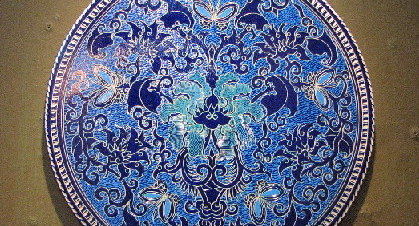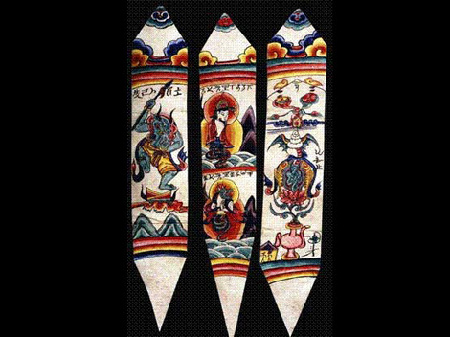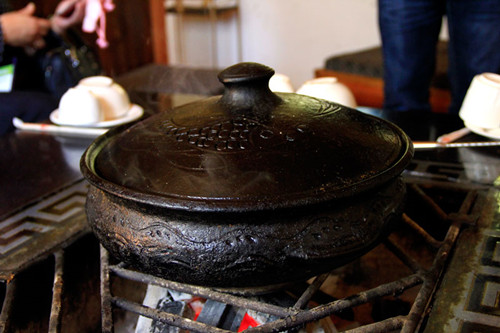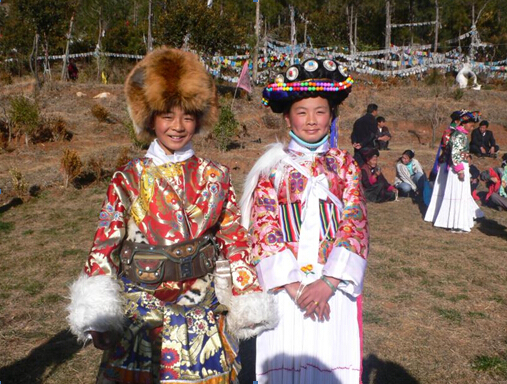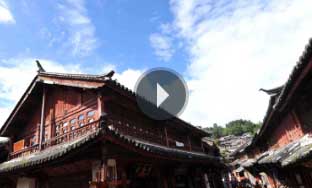Dongba painting of Naxi ethnic group
(Cultural-China.com)
Dongba painting, the oldest and most representative religious painting of the ancient Naxi people, is also their most special and characteristic artistic legacy. It is mainly found in the Naxi region of Lijiang City, Yunnan Province in southwest China.
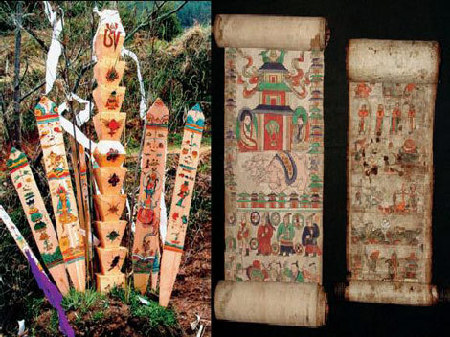 |
Dongba painting originated from ancient Dongba hieroglyphs as well as from various Dongba religious activities. For instance, during the sacrificial ceremonies, the ceremony masters had to dress like Buddha, gods, animals, plants, or even demons. Dongba artists then would draw these images down on paper, creating a primitive form of today's Dongba painting.
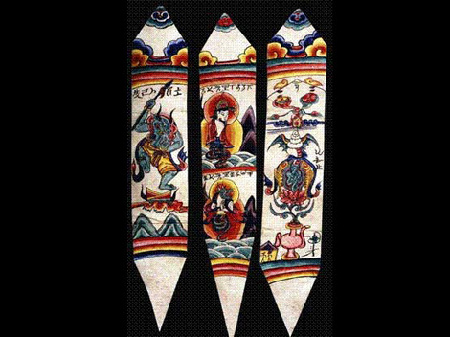 |
A. Categories Dongba paintings, as an important part of Dongba culture, were mainly about gods and ghosts which the Naxi believed in. The paintings also reflected various aspects of people's social lives.
The materials used are primarily wood flakes, Dongba paper, and flax. The outline of a picture is first sketched with a bamboo pen and ink made from pine trees, and then pigmented with various natural colors that are bright and colorfast.
Dongba painting incorporates the five classic artistic characters of hieroglyphs: the Beiye scripture form, exquisite lines, beautiful colors, dynamic expression and sharp features. It falls into different categories, with each one depicting one or several moving stories. The paintings can be categorized into the following kinds according to the forms employed.

